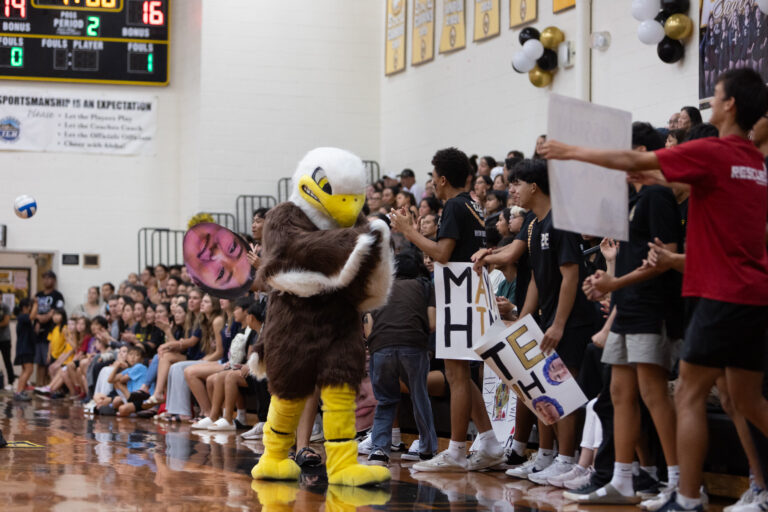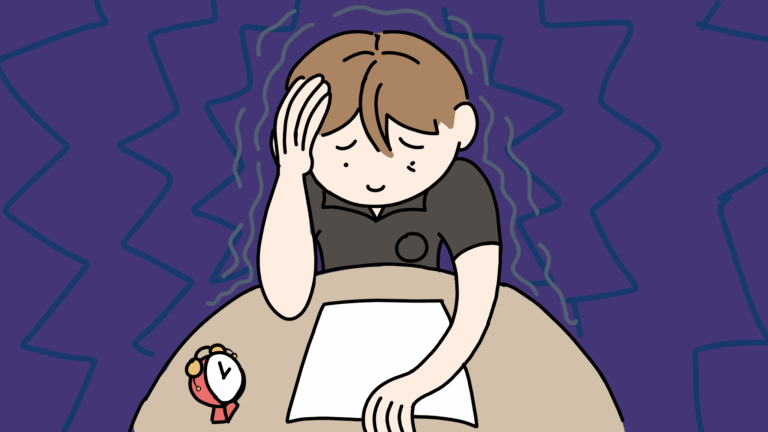On Saturdays, when most high schoolers are busy sleeping in till noon, meeting friends at the mall, or catching up on schoolwork, freshman Calla Pien has other plans.
“I have a show in November, and currently, I have rehearsals every Saturday, which makes it very hard to have a real life, hang out with my friends, and get my homework done since I’m always at the studio,” she said. Pien’s weekend schedule as a dancer isn’t unique to her; junior Taylor Malinger and senior Lisa Zheng agreed that the balance between dance and school can be a precarious one. Malinger said, “I stay up a lot later doing homework, because dance takes up an entire afternoon. Sometimes I’ll have performances on school days, so I’ll go straight from campus to the venue.” Zheng added, “In the past, I had to miss out on certain events, such as Spike Nite, and I probably will this year too because of rehearsals.” Likewise, freshman Piper DeCova, who’s currently involved in dance and tennis, is worried about being able to make it to practices for both activities.
Despite the sacrifices that dance requires, its adherents thoughtfully and passionately identified the motivations behind their continued commitment. When she was young, freshman Seraphina Zulueta-Imai aspired to be a ballerina, and her childhood dream hasn’t lost its magic. Malinger too has been dancing since her elementary years. “My brother and sister both do cross country at HBA, and it looks like the team has a lot of fun together, so sometimes I wondered what it would be like if I participated in a school-related activity and got closer to HBA people. But then eventually I realized, no, dance is my thing. I’ve invested so much in it. The studio itself is my home. The people I dance with are family…That’s where I feel most like myself–just being at the studio, hanging out with my friends, and doing what we love,” she said.
Pien and Zheng cite the exhilaration of performing as one of the main reasons for their enduring passion. Pien said, “I like the adrenaline rush, doing my hair and makeup, and hanging out backstage,” and Zheng added, “It’s nice to see that my hard work has paid off. When I have a good performance, I feel so proud of and happy about it.”
Senior Lyndsy Mashino, who has been dancing ballet for nine years, said, “I also really enjoy the musical aspect of dance, because I play trumpet in the band, and so dancing ties those passions together.” Junior Riley Lorenzo, who dances hula in HBA’s halau, added, “When I was younger, I thought the only form of worship was singing, but as I grew older, my teacher taught me that dance and any other form of art can also be an act of worship. Anything that you do with your heart to glorify God can be worship. When I was little, I was always focused on being perfect, remembering every single move, and conveying the right emotion all the time, and that made hula a struggle for me instead of something that I enjoyed. But learning to dance for God helped me to use hula as an act of worship and a one on one connection with God, instead of something that I use to make myself feel better or to please others.”
Dance is somewhat unique in its blend of artistry and athleticism. In classical ballets like Giselle and The Nutcracker, performers make physical feats of extreme strength and precision appear effortless, all the while conveying the heartfelt emotion of the show’s storyline through expressive facials and movement that perfectly partners with every nuance of the music. Zheng explained, “Once we have the technique down, we learn to be more artistic, because that’s what really matters. Even though dance is physically demanding, it’s a performing art. It has to look entertaining for the people who are watching. Even though you’re suffering and doing hard work, it can’t look ugly.”
Because dancers are often judged on the aesthetic appearance of the lines of their body, some performers wrestle with personal insecurities. Mashino said, “What helps me is knowing my limits, understanding that all bodies are made differently, and growing more comfortable with what’s healthy for me.” Zheng noted that many professional dancers on social media possess the slim build associated with the ideal body type for a ballerina. However, she’s found a way to circumvent the perilous trap of comparison. “I admire their technique and artistry and look for ways that I can improve myself in those ways, because the whole ‘ballerina body’ stereotype is so toxic and outdated,” she said.
Malinger is grateful for her studio’s supportive and inclusive culture, which minimizes the risk of any body image issues. However, she does struggle with knowing she’ll never possess perfect, highly arched feet or the right line in her arabesque. She added, “It’s easy to point out all of these physical flaws since I’m surrounded by floor-length mirrors in the studio…I try to work on what can be improved to an extent, like my feet or turnout. For the things that can’t change, I aim to become the healthiest person I can within reason, because since every body type is different, I know that I can’t ask any more of myself.”
Along with fanning the flames of insecurity, dance can be notorious for fostering perfectionism and envy. Pien commented, “It can wreck your image of yourself, because if you can’t do something like all the other girls can, you feel discouraged.” Zulueta-Imai agreed, adding, “Some dancers can bring negativity, like, ‘Oh, you’re not good at your pirouettes or fouettes,’ and it’ll kind of bring you down. But I don’t think it necessarily makes me feel bad about myself, because it’s just motivation– like, okay, I’ll just do better.”
Offering a different perspective, Malinger said, “This has been a recent revelation to me, but the only person that you’re up against is yourself. If you compare yourself to everyone else, you’re always going to fail. But if you’re only competing against yourself, then you’ll only succeed. Try to beat your previous record. If you did three turns, shoot for four, instead of thinking, Oh, she can do five and I can’t even do four, so I guess I’ll never get there. That’s just going to stop you from going any further.”
Although there are potential negative aspects to participating in dance, there’s also many benefits. As dancers invest time and effort into their craft, they often gain creativity, steely determination, and sophisticated storytelling skills. Reflecting on the ways that dance has shaped her personality, Zulueta-Imai said, “It’s definitely made me more open to do new things. Also, it really helped my social skills, because in dance, you have to socialize a lot. For example, if I don’t understand a combination, I’m not afraid to ask my teacher or my classmates for clarification. I used to be super shy, and now I’m not.” Mashino added, “It taught me to be determined and hardworking, because there’s a lot of moves that you have to practice and work to get up to. I’ve learned to not give up and to be excited for new challenges.” Additionally, the obstacles that dancers face can be catalysts for character development. When Mashino was told she couldn’t go on pointe because of the shape of her feet, she was frustrated, but eventually came to view the experience as an opportunity to grow in her relationship with God. “It was hard to accept, because if you’re doing ballet, that’s the next step you’re supposed to take, and I can’t and really shouldn’t do it,” she said. “I tried to make it happen on my own. But with how everything worked out, it was clear that God was saying no, and now that I’m in the future, I can see that it was definitely better. With my control issues, God definitely reminds me of His actual purpose and what He has planned for me.”
Although dance may seem like a solo pursuit, performers often develop deep, lasting bonds with their classmates. Zheng remarked, “I’ve known my dance friends all my life. Since I don’t go to school with them, dance is our time to see each other, which motivates me to go to class even if I’m not feeling particularly motivated.” Zulueta-Imai added, “I’ve met some pretty solid people, and the older girls have taught me a lot, not just about dance but about life.”
The relationship between different generations of dancers is very meaningful to Malinger as well. About a year ago, she started teaching some of the younger girls in her studio. She said, “Getting to impact these kids is kind of a huge thing for me. I remember when I was younger, I’d look up to the older girls who are my age now, but at the time, I thought they were like professional dancers, and I’d try to copy them. So being able to influence the younger girls has really strengthened my relationship with God, because I need to have wisdom, and I want to be a godly example through being loving and kind.”

At the moment, there’s no club or program for non-hula dancers at HBA, but many dancers express interest in having one. “Dance can be mentally draining. One day you get a lot of corrections, and then you think, Oh, I suck. But then another day, you get a compliment, and you think, Maybe I’m not as bad as I thought. It would be nice to talk to people who understand and have similar experiences, since you can’t really discuss it with your friends who don’t dance,” Zheng said. Zulueta-Imai added, “My old school had a dance team, and it was definitely really fun, especially since I got to be in class with all the high schoolers.”
As Zheng starts her final year of high school, she said, “Even though right now I’m not planning on seriously pursuing dance in college, I’d still like to do classes on the side to keep myself in shape, but because dance is very physically demanding, probably not all the time. Dance might be worse on my body as it gets older and weaker, but it’ll be better for my heart.” Lorenzo plans to continue dancing at HBA’s halau, commenting, “I’d love to continue this year and senior year, but my other peers have left. So I’m just hoping that more girls join and set their hearts on worshiping God through hula.” When asked what advice she would give to her younger self, she mused, “Let go of your own desires to do well for yourself and to do well for whoever’s watching, and refocus your perspective on the reason why you dance and the reason you do what you do.”







